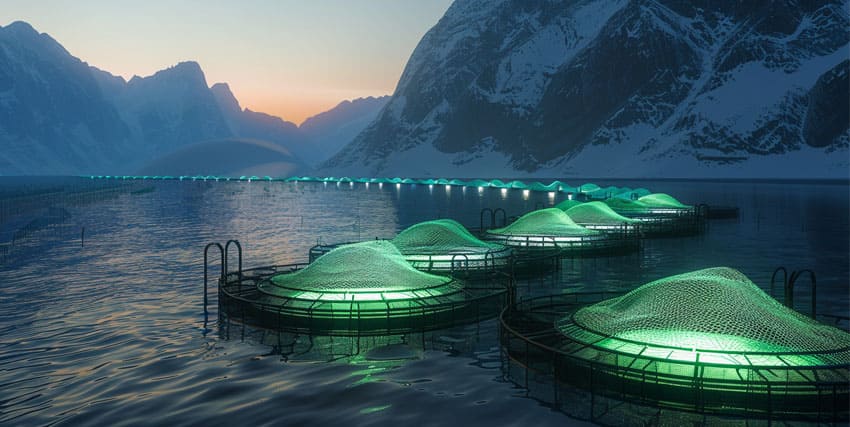

After delving into the spectral requirements necessary for a thriving aquatic environment, you might think you’ve grasped everything about underwater lighting for aquaculture. But hold on! The LUXCOB team is here to share some advanced insights that can truly make a difference in your fish farming endeavors.
While understanding light spectra is vital, we must also consider how fish eyes respond to movement. This aspect is crucial for designing aquaculture lighting systems that enhance feeding behavior and overall fish well-being.
The Fascinating Visual System of Fish
The visual system of fish isn’t just a biological curiosity; it’s a gateway to understanding how to optimize lighting in your fish farming operations. Much like humans, fish display a remarkable ability to respond to moving objects. However, their perception works differently based on the flicker frequency of light.
When the frequency of a moving object is low, the fish perceive it as flickering. But as the frequency increases beyond a certain point, the fish’s visual system integrates the flashes into a continuous image. This threshold is known as the Critical Flicker Fusion Frequency (FFF).
It’s important to note that FFF isn’t static; it varies with light intensity and the adaptation state of the retina to light and darkness. In simpler terms, the brighter the environment and the more adapted the fish are, the higher the FFF they can perceive.
Understanding FFF with LUXCOB's Expertise
At LUXCOB, our expert optoelectronic design team employs cutting-edge techniques to assess the FFF of different marine fish species. We utilize a specific behavioral experiment involving rotating fan blades marked with black and white stripes. As the blades spin, fish respond to the motion until a certain frequency is reached—at which point they cease their flicker response.
From an aquaculture standpoint, when the flicker frequency of your lighting exceeds the FFF, fish perceive the light as constant rather than flickering. This steady illumination allows them to forage more efficiently, enhancing their overall feeding activity.
Our collaboration with breeding clients has demonstrated that, for Atlantic salmon, the FFF ranges from 30Hz to 50Hz. This critical information empowers fish farmers to optimize their lighting systems for better productivity.
Designing Your Aquaculture Lighting: Key Takeaways
So, what does this mean for your aquaculture setup? Here are a few actionable insights:
Choose Lighting with the Right FFF: Use lights that operate at a frequency higher than the FFF of your target species. This ensures that the fish the light as continuous, promoting active feeding behavior.
Adjust Light Intensity: Tailor the intensity of your lights based on the light adaptation status of your fish. Juveniles may require different setups compared to adults.
Consider Motion Design: Incorporate lighting designs or fixtures that facilitate gentle motion, which can simulate natural conditions, potentially enhancing fish responses.
Test and Adapt: Collaborate with expert teams (like LUXCOB) to test your lighting configurations. Gather data on your fish population's responses to different light settings and adjust accordingly.
Conclusion: Let's Illuminate Together
With the right knowledge and tools, you can transform your fish farming operation into an efficient and productive system. The interplay between light and fish behavior is a vital piece of the aquaculture puzzle.
Are you ready to take your aquaculture lighting to the next level? Reach out to the LUXCOB team today, and let’s work together to design a customized lighting solution that benefits both your fish and your bottom line!

